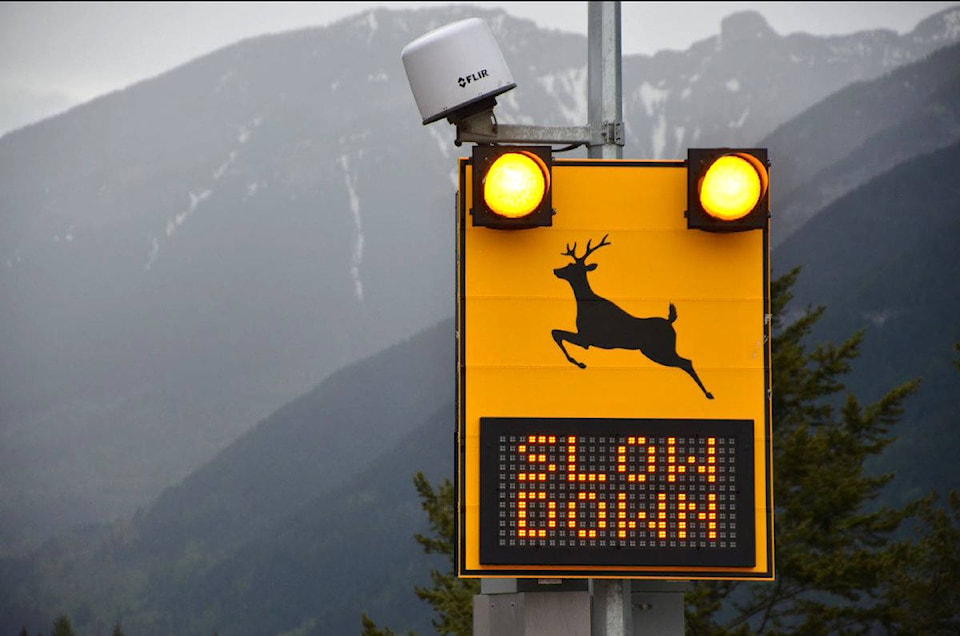A poll of The Free Press readers has found the majority believe that wildlife detection systems set up in the Elk Valley are not an effective way to detect wildlife.
In 2016, the Ministry of Transportation and Infrastructure (MOTI) installed two wildlife detection systems in the Elk Valley; one west of Fernie in the rock cuts and the other east of Sparwood.
According to MOTI, there are nine thermal cameras set up in each wildlife detection corridor. They work in conjunction with radar sensors to detect wildlife and alert drivers of their presence with flashing roadside signs.
The two detection systems cover about nine kilometres of Highway 3 where large populations of animals tend to roam. The two systems cost approximately $1.5 million to install.
On February 21, The Free Press published an online poll asking readers for their views on the detection systems.
Roughly 65 per cent (64.5 per cent) of respondents believe that these systems are not an effective way to detect wildlife.
About 27 per cent say that while these systems are not an effective way to detect wildlife, they are effective in encouraging drivers to slow down and avoid hitting any animals potentially in the area.
About eight per cent of readers believe the signs are effectively detecting wildlife alongside the highway, and as a result, reducing wildlife-motor vehicle collisions.
Written responses to the poll on Facebook ranged in topic and tone. Some were negative – no, they do not work, they are inconsistent and always flashing with no animals to be seen, which causes people to become complacent.
Some readers indicated their hope that “no more money is wasted on these systems”. Others believed fencing high traffic wildlife corridors would be a better option, while one user said they cannot see the animals because of the bright glowing lights.
Another reader said that any animals on the highway while the detection systems are going off is “just a coincidence”.
Some comments were positive. One reader, who lives close to a detection system, said they hadn’t seen a single deer hit by a car since it was installed. Others claimed to have seen animals run onto the highway, trip the detection system and keep running.
According to MOTI, the wildlife detection systems are effectively detecting wildlife either on the side of the highway or crossing the highway. They said they are also working well to warn drivers to slow down and avoid hitting the animals.
“The results of speed comparisons showed that significant reductions in average speeds, ranging between four and 15.7 km/hr was seen, when the system was activated,” said an MOTI spokesperson.
“Collision data showed reductions in wildlife-motor vehicle collisions, however, we do not yet have enough data to determine trends.”
In addition, MOTI explained that when an animal is killed on the highway, it is the responsibility of the local maintenance contractor to pick up the dead animal and safely dispose of the carcass.
“Carcass abandonment is not considered an acceptable disposal practice,” said an MOTI spokesperson.
“The local maintenance contractor will dispose of carcasses in a manner acceptable to local regulatory agencies and at locations approved by the Province.”
Furthermore, in the event the contractor disposes of a carcass in a Province-approved location, the MOTI’s Environmental Best Practices for Highway Maintenance Activities shall be followed.
If carcasses are stored in a location, MOTI explained that a contractor must do so in a manner which will not attract animals and shall not bury the carcasses near water bodies, watercourses or sources of drinking water.
